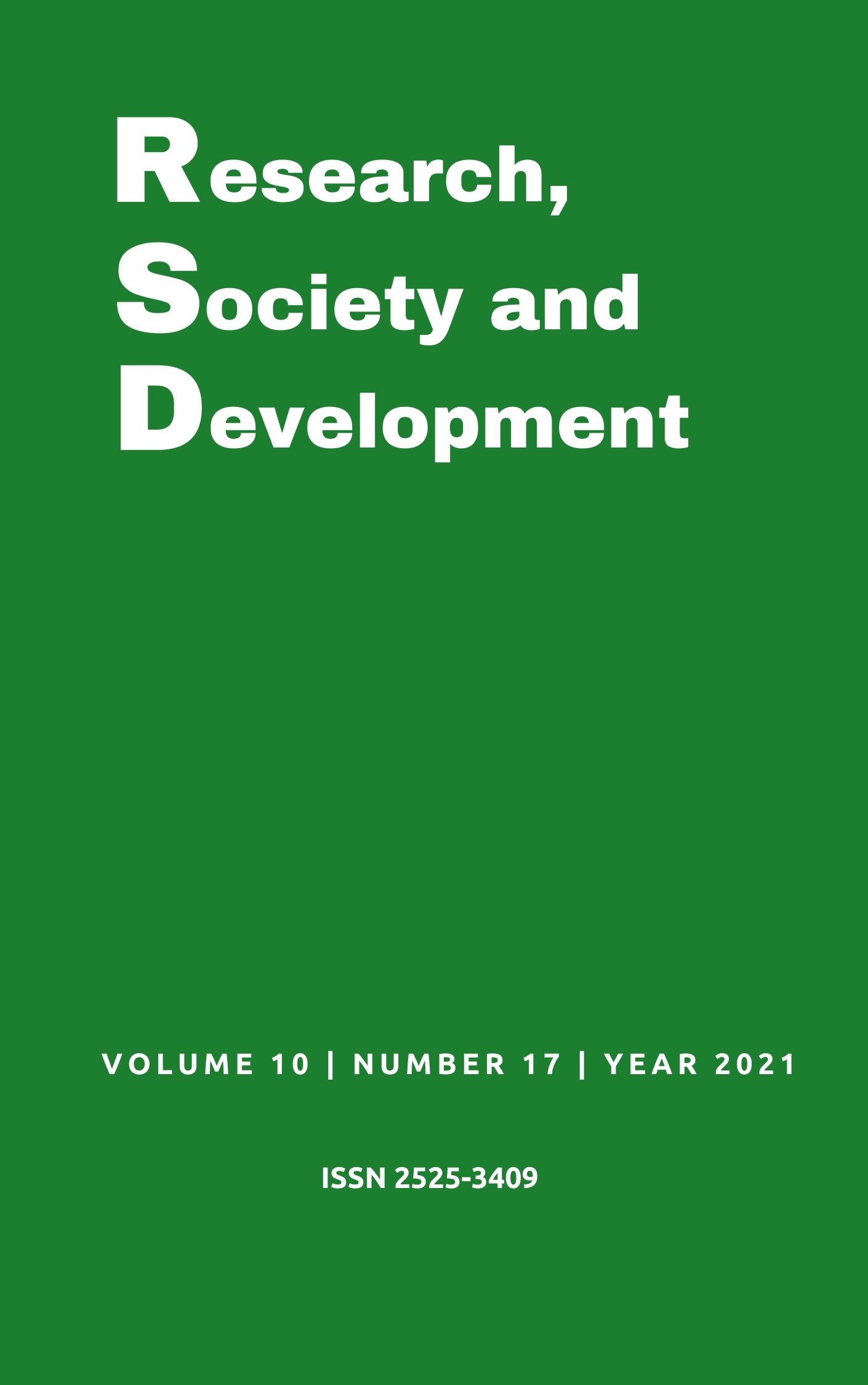Content validation of an instrument to verify the screentime in childhood
DOI:
https://doi.org/10.33448/rsd-v10i17.24357Keywords:
Speech Language and Hearing Sciences, Child Language, Family, Screen Time, Validation Study.Abstract
Purpose: To develop and validate the content of the “Tempo de Tela'' instrument for parents and/or guardians of children in the preschool period. Methods: 5 experts in the area of interest were selected to judge the instrument to be validated through a form with 12 dichotomous questions. The descriptive analysis was performed by calculating the simple frequency and content analysis was performed for the essay answers. Results: 100% of the judges judged the approach to the theme, direction to the content, clarity, coherence and cohesion, distribution of the questions and visual aspect as appropriate items. The changes considered were: adding a question (40%) and proposals for aesthetic changes (40%). Among the suggestions for adding questions are: The child's educational level; if you study in a public or private school; parents' socioeconomic level; parents' perception of screen time. Regarding aesthetic changes, the following were mentioned: greater space for open questions; greater space between one question and another; alignment in the middle of the topic sentences; use Likert scale; keep the same question on a single page. Conclusion: The instrument was subjected to the content validation steps recommended in the literature and fulfills the requirements regarding its face and content.
Downloads
References
Alexandre D. S. Alpes M. F; Reis A. C. M. B & Mandrá P. P. (2020). Validation of a booklet on language developmental milestones in childhood. Rev. Cefac, 22 (2), 1-14.
Bittencourt H. R. (2011). Desenvolvimento e validação de um instrumento para avaliação de disciplinas na educação superior. Estudos em Avaliação Educacional,48 (22), 91-113.
Câmara H. V. (2020). Principais prejuízos biopsicossociais no uso abusivo da tecnologia na infância: percepções dos pais/Main biopsychosocial damages in abusive use of child technology: parental perceptions. Revista de Psicologia, 51 (14), 366-379.
Correa A. M. G. (2016). Impacto das tecnologias: o olhar dos pais acerca do viver saudável da criança. Revista de Enfermagem do Centro-Oeste Mineiro, 6 (1), 1915-1929.
Da Silva C. M., & Ziegler M. M. (2016). Até que ponto os aparelhos eletrônicos ajudam e/ou atrapalham no desenvolvimento infantil? Uma Nova Pedagogia para a Sociedade Futura.
De Paula M. E., & Pereira R. M. R. (2018) Os usos sociais que as crianças fazem das mídias na vida. Caderno de Educação, 49 (1), 105-122.
Grizólio T. C., Scorsolini-Comin F. (2020). Como a mediação parental tem orientado o uso de internet do público infanto-juvenil? Psicologia Escolar e Educacional, 24 (1), 1-10.
Macarini S. M; Martins G. F; Minetto M. F & Vieira M. L. (2010). Práticas parentais: uma revisão da literatura brasileira. Arquivos Brasileiros de Psicologia, 62(1), 119-134.
Madigan S. Association between screen time and children’s performance on a developmental screening test. (2019). JAMA pediatrics, 173 (3): 244-250.
Maziero L. L; Ribeiro, D. F & Reis H. M. (2016). Desenvolvimento Infantil e Tecnologia. Revista Interface Tecnológica, 13 (1), 13-23.
Morais E. A. S; Rojas S. S. O & Veiga V. C. (2014). Indicadores de saúde no cuidado ao paciente crítico neurológico. Rev Rene, 15 (2), 89-195.
Nobre J. N .P.(2021). Fatores determinantes no tempo de tela de crianças na primeira infância. Ciência & Saúde Coletiva, 26 (3), 1127-1136.
Pereira J. F. (2017) Influência dos fatores biológicos e socioeconômicos no desenvolvimento neuropsicomotor de pré-escolares. Saúde e Pesquisa, 10 (1), 135-144.
Santana M. I; Ruas M, A & Queiroz P. H. B. (2021). O impacto do tempo de tela no crescimento e desenvolvimento infantil. Revista Saúde em Foco, 14 (1), 169-179.
Silva A. F. (2016). Validation of an educational material as pedagogical tool on sexual initiation for teens, Journa of Nursing UFPE, 0 (1): 1-10.
Sociedade Brasileira de Pediatria. (2016). Saúde de Crianças e Adolescentes na era digital. Manual de Orientação nº 1, 10/2016.
Souza A. P; Zeigelboim B. S; Santos R. S. (2018). Atenção à disfagia orofaríngea no home care: gerenciamento fonoaudiológico: estudo de validação de aparência e conteúdo de um manual de orientação. Rev. Cefac, 20 (5): 640-647.
Ribeiro L. C. C. (2017). Construção e validação de manual sobre burnout em professores. Revista de Enfermagem do Centro-Oeste Mineiro, 7 (1), 13-17.
Van del Heuvel M. (2019). Mobile media device use is associated with expressive language delay in 18-month-old children. Journal of Developmental and Behavioral Pediatrics, 40 (2), 99-109.
World Health Organization. (2016). Guidelines on physical activity, sedentary behaviour and sleep for children under 5 years of age. World Health Organization.
Downloads
Published
Issue
Section
License
Copyright (c) 2021 Leticia Rodrigues Alves Bispo; Matheus Francoy Alpes; Patrícia Pupin Mandrá

This work is licensed under a Creative Commons Attribution 4.0 International License.
Authors who publish with this journal agree to the following terms:
1) Authors retain copyright and grant the journal right of first publication with the work simultaneously licensed under a Creative Commons Attribution License that allows others to share the work with an acknowledgement of the work's authorship and initial publication in this journal.
2) Authors are able to enter into separate, additional contractual arrangements for the non-exclusive distribution of the journal's published version of the work (e.g., post it to an institutional repository or publish it in a book), with an acknowledgement of its initial publication in this journal.
3) Authors are permitted and encouraged to post their work online (e.g., in institutional repositories or on their website) prior to and during the submission process, as it can lead to productive exchanges, as well as earlier and greater citation of published work.


